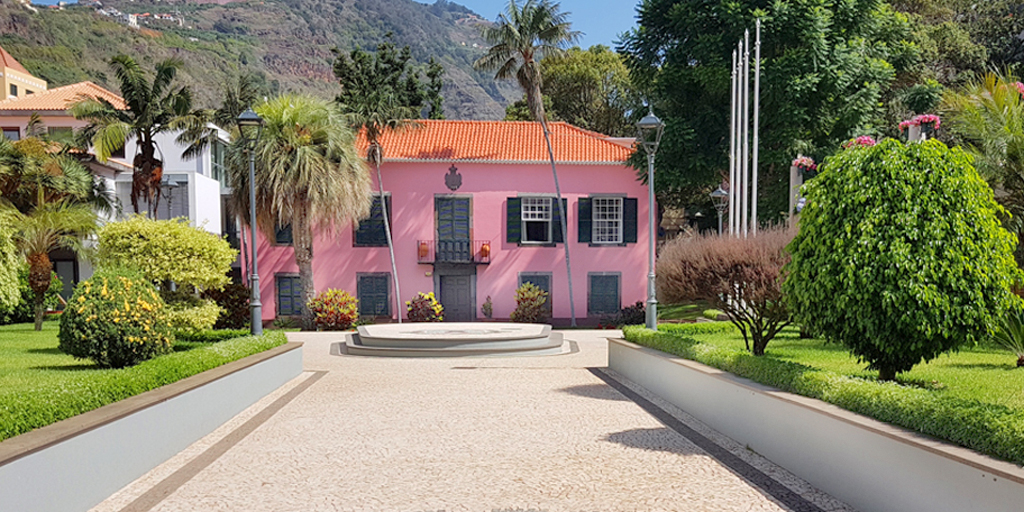# 8 – Ribeira Brava

Ribeira Brava – At The Wild River The Historical Significance of Ribeira Brava Ribeira Brava is a small Portuguese town and municipality, located approximately 15 km from Funchal. After the settlement of Machico and Funchal by Madeira’s early explorers, the colonization extended westward, and Ribeira Brava became an independent parish in 1676. During these early settlement years, Ribeira Brava served as an important hub for trade. Its central location on the southern coast and its river connection enabled the transport of agricultural products from the mountainous interior. Notably, sugarcane and wine were loaded and exported from here. However, it wasn’t until 1904–1908 that a small dock and pier were constructed, carved into the eastern cliffs to provide access to the sea. An interesting aspect is the role of the river in naming the town: “Brava” means “wild,” referring to the unpredictable nature of the river, especially during the rainy season. The river was both a resource and a threat, as it would overflow and cause floods. Following the devastating floods of February 2010, the riverbed was corrected, reducing its potential for disaster—at least for now. Ribeira Brava Through the Ages Initially, agriculture was the main source of income in this parish. The fertile soils and favorable climate allowed for the cultivation of sweet potatoes, sugarcane, wine, bananas, and other exotic fruits. Over the centuries, Ribeira Brava has transformed from an agriculturally focused community into a charming coastal town that attracts both tourists and locals. Its unique blend of historical heritage, natural beauty, and modern infrastructure makes it a standout destination. Take a stroll through the historic old town, relax along the seaside promenade, and immerse yourself in the atmosphere of Madeira’s past. Located directly on the Atlantic Ocean, Ribeira Brava offers swimming opportunities and several excellent restaurants. The small municipal market, which operates daily, is also worth a visit. Highlights and Attractions Ribeira Brava has plenty to see and experience: Museu Etnográfico da Madeira This museum offers insights into the lives and traditions of Madeira’s residents, including basket weaving, winemaking, and traditional fishing. A must-visit for history and culture enthusiasts.https://cultura.madeira.gov.pt/museu-etnografico-da-madeira Forte de São Bento da Ribeira Brava Originally built to protect the population from pirate attacks, this small fortress now houses a tourist information center offering helpful tips for visitors.Opening Hours: Mon–Fri 10:00 AM–3:30 PM, Sat 10:00 AM–12:30 PM Igreja de São Bento This 16th-century parish church is renowned for its ceramic mosaic of Our Lady of Fátima on its exterior wall. Built with baroque elements, the church features an extensive collection of paintings, sculptures, goldsmith works, and gilded wood carvings. Farol da Ribeira Brava This small lighthouse is located at the eastern end of the promenade. Solar dos Herédias Now serving as the town hall and public garden, the Solar dos Herédias manor house was built in the late 18th century. In 1994, it was designated a monument of municipal interest due to its architectural details.The park-like garden offers a diverse range of botanical species. Since the 1980s, the Solar dos Herédias has been the seat of the city council. Miradouro de São Sebastião A viewpoint above the town offering spectacular views along the southwest coast. Maybe interesting too: Ribeira Brava once had a cinema located on Lagoa dos Herédias Street. It has since been converted into the city library, where an old film projector in the entrance area stands as a testament to this cinematic past. Festivals and Cuisine Traditional FestivalsA well-known festival in Ribeira Brava is the celebration of its patron saint, São Bento, typically held in March (dates for 2025 are not yet available). The colorful flower-filled processions make this event a highlight. The festivities begin with a church service, followed by a traditional procession through the flower-adorned streets, known as the Sermão da Bagaceira. Photography enthusiasts will love this event. Culinary HighlightsRibeira Brava is famous for its fresh seafood. Local specialties such as Bolo do Caco (Madeira’s iconic garlic bread) or Espada (black scabbardfish) paired with locally grown bananas and passion fruit sauce are a true delight. Looking for more stress-free adventures on Madeira? “Madeira by Bus” is your ultimate travel companion, featuring detailed bus schedules, insider tips, and must-visit destinations across the island. Whether you’re a first-time visitor or a seasoned explorer, this guide makes it easy to plan your journey.👉 Get your copy today at www.madeira-by-bus.com/read and start exploring Madeira the eco-friendly way!